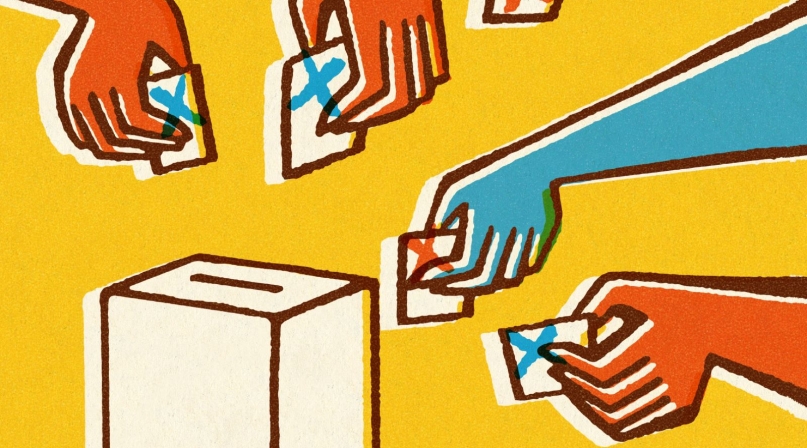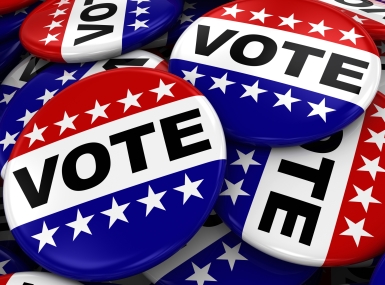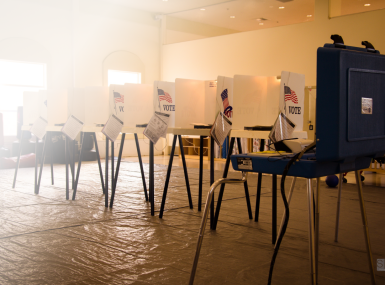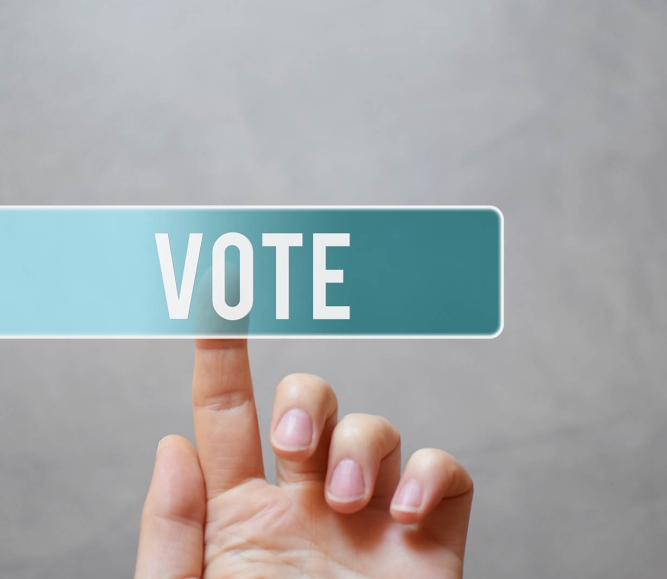Los Angeles County expands voting options for incarcerated residents

Key Takeaways
For the first time, eligible incarcerated individuals in all Los Angeles County jails will have the opportunity to vote in-person during the March primary and November election as part of the county’s Free the Vote initiative, which aims to increase civic engagement in its justice-involved population.
Each county jail will operate a Flex voting center during scheduled time blocks throughout the state’s 10-day voting period where inmates can register to vote on-site and fill out their ballot through a streamlined process, made possible through a partnership between the county’s Sheriff’s Office and Registrar Recorder’s Office.
Learn more
While Los Angeles County jail inmates have had the ability to vote-by-mail for some time, it wasn’t until the Voting While Incarcerated pilot program at the Century Regional Detention Facility for Women in 2020 that incarcerated individuals were allowed to cast their vote in-person at a jail.
Los Angeles County Registrar-Recorder/County Clerk Dean Logan said that the in-person voting expansion is a “game changer,” because it allows incarcerated individuals to vote without the advanced preparation involved with absentee voting, which requires multiple steps over the span of months.
“It certainly provides more independence in the act of voting than the original vote-by-mail model does,” Logan said. “… Our Board of Supervisors, from a policy level, have adopted a ‘Care first, jails last’ type of approach, so there’s a priority in L.A. County of recognizing that just because somebody’s justice involved, they still should have access to basic public services, and civic engagement and participation is a part of that.”
In-person voting is an expansion of county jail inmates’ voting options, not a replacement of the previous process, so they can still vote-by-mail if they choose to. While voting-by-mail is proven to be secure and safe, Logan said the added option of in-person voting could encourage more incarcerated individuals to vote.
“From the individual voter’s perspective, the in-person option gives them that ability to actually see the process from start to finish and know that their ballot is in a secure ballot box and it’s coming back to be counted,” he said.
Following the success of the 2020 pilot program, the Voting While Incarcerated initiative was brought to the Peter J. Pitchess Detention Center in 2022 and will now be offered in all seven county jails.
Logan credits the program’s expansion to not only the “critical coordination” between the Sheriff’s Office and Registrar Recorder’s Office, but also its work with advocacy organizations and justice-involved agencies through the Free the Vote initiative to get the word out about in-person voting at the jails.
“I think part of the success of it is having them engage with the incarcerated individuals,” Logan said. “So that they understand the importance of voting as opposed to simply just putting notices during mealtime that voting is going to be available next week at 11 a.m., but actually giving them information that encourages that level of participation and makes it relevant to those people.”
In-person voting in local jails is also offered in Washington, D.C and certain sites in Denver County, Colo., Harris County, Texas and Cook and Will counties in Illinois. Logan said his advice to other counties looking to implement a similar program is to create a strong relationship between the Elections Office and Sheriff’s Office and be aware of the necessary training and voting equipment involved.
“In our county, part of what makes this work is that we’re able to actually get connectivity so we can access our voter database from the jail facility,” Logan said. “So, we can register people to vote on site and update their record, but also maintain the security of making sure that that’s somebody who hasn’t already voted or something of that nature.
“In smaller counties, where they may not have the resources, I think it’s still doable in those jurisdictions, it just may require more manual interaction than what we do here.”
Because the Registrar Recorder’s Office doesn’t have direct contact with county jail inmates, the Free the Vote coalition helps promote voting and provide information to incarcerated individuals. According to Logan, that could look like an incarcerated individual getting information on voting registration and available voting options through their public defender or information about ballot measures through American Civil Liberties Union outreach so that they can do research and be prepared to vote.
“This is all around the idea of being some form of restorative justice to ensure that while they’re waiting in many cases to go to trial, that they already maintain those rights and to encourage them to exercise them, but also even for those who may be ultimately convicted and go into the state prison system, to encourage them to remain engaged and active and to be aware that they have those rights returned once they’re no longer incarcerated.”
Related News

2024 Clearinghouse Awards: U.S. Election Assistance Commission recognizes county excellence in election administration
The U.S. Election Assistance Commission (EAC) announced the winners of its 2024 Clearinghouse awards, recognizing 32 counties for their election administration practices during the 2024 election cycle.

County Countdown – April 7, 2025
Every other week, NACo's County Countdown reviews top federal policy advocacy items with an eye towards counties and the intergovernmental partnership. This week features a budget reconciliation update, HHS restructuring and more.

Both the Administration and Congress act on 'noncitizen voting:' What this could mean for counties
The U.S. House will consider the Safeguard American Voter Eligibility (SAVE) Act this week to require individuals to provide proof of citizenship to register to vote.
County News
Counties try mobile voting options

